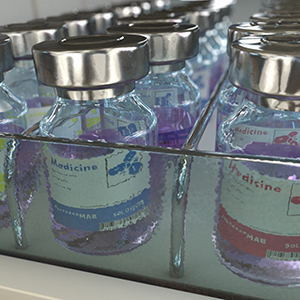 On January 17, 2025, the Food and Drug Administration approved datopotamab deruxtecan-dlnk (Datroway, Daiichi Sankyo, Inc.), a Trop-2-directed antibody and topoisomerase inhibitor conjugate, for adult patients with unresectable or metastatic, hormone receptor (HR)-positive, human epidermal growth factor receptor 2 (HER2)-negative (IHC 0, IHC1+ or IHC2+/ISH-) breast cancer who have received prior endocrine-based therapy and chemotherapy for unresectable or metastatic disease. The recommended datopotamab deruxtecan-dlnk dose is 6 mg/kg (maximum of 540 mg for patients ≥90 kg), administered as an intravenous infusion, once every 3 weeks (21-day cycle), until disease progression or unacceptable toxicity.
On January 17, 2025, the Food and Drug Administration approved datopotamab deruxtecan-dlnk (Datroway, Daiichi Sankyo, Inc.), a Trop-2-directed antibody and topoisomerase inhibitor conjugate, for adult patients with unresectable or metastatic, hormone receptor (HR)-positive, human epidermal growth factor receptor 2 (HER2)-negative (IHC 0, IHC1+ or IHC2+/ISH-) breast cancer who have received prior endocrine-based therapy and chemotherapy for unresectable or metastatic disease. The recommended datopotamab deruxtecan-dlnk dose is 6 mg/kg (maximum of 540 mg for patients ≥90 kg), administered as an intravenous infusion, once every 3 weeks (21-day cycle), until disease progression or unacceptable toxicity.
Datopotamab deruxtecan is an anti- trophoblast cell-surface antigen 2 (TROP2) ADC in development as a treatment for breast and lung cancer. The payload, a topoisomerase I inhibitor, is conjugated to a humanized IgG1k antibody via a cleavable linker. Daiichi Sankyo maintains exclusive rights for this ADC in Japan but has an agreement with AstraZeneca to jointly develop and commercialize datopotamab deruxtecan in the rest of the world. DATROWAY® was first approved in December 2024 in Japan for the treatment of adult patients with hormone receptor (HR) positive, HER2 negative (IHC 0, IHC 1+ or IHC 2+/ISH-) unresectable or recurrent breast cancer after prior chemotherapy.
Efficacy was evaluated in TROPION-Breast01 (NCT05104866), a multicenter, open-label, randomized trial. A total of 732 patients were randomized (1:1) to datopotamab deruxtecan (n=365) or investigator’s choice of chemotherapy (n=367); eribulin (60%), capecitabine (21%), vinorelbine (10%), or gemcitabine (9%). The major efficacy outcome measures were progression-free survival (PFS), assessed by blinded independent central review (BICR), based on RECIST v1.1 and overall survival (OS). Additional efficacy outcomes included confirmed objective response rate (ORR) and duration of response (DOR) by BICR. Median PFS was 6.9 months (95% CI: 5.7, 7.4) in the datopotamab deruxtecan-dlnk arm and 4.9 months (95% CI: 4.2, 5.5) in the chemotherapy arm (Hazard ratio 0.63 [95% CI: 0.52, 0.76] two-sided p-value <0.0001). Median OS was 18.6 months (95% CI: 17.3, 20.1) in the datopotamab deruxtecan-dlnk arm and 18.3 months (95% CI: 17.3, 20.5) in the chemotherapy arm (Hazard ratio 1.01 [95% CI: 0.83, 1.22]; two-sided p-value was not statistically significant). Confirmed ORR was 36% (95% CI: 31, 42) and 23% (95% CI: 19, 28) and median DOR was 6.7 months (95% CI: 5.6, 9.8) and 5.7 months (95% CI: 4.9, 6.8) in the datopotamab deruxtecan-dlnk and chemotherapy arms, respectively.

